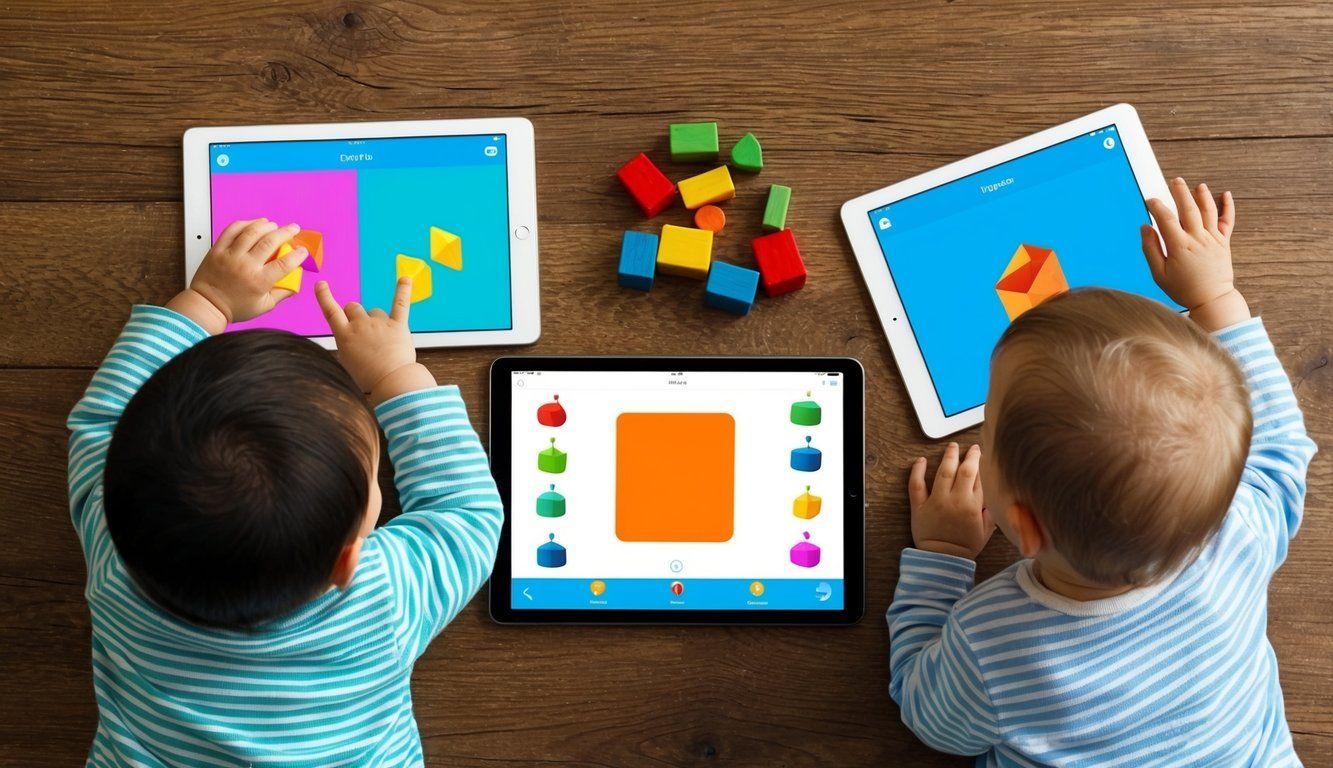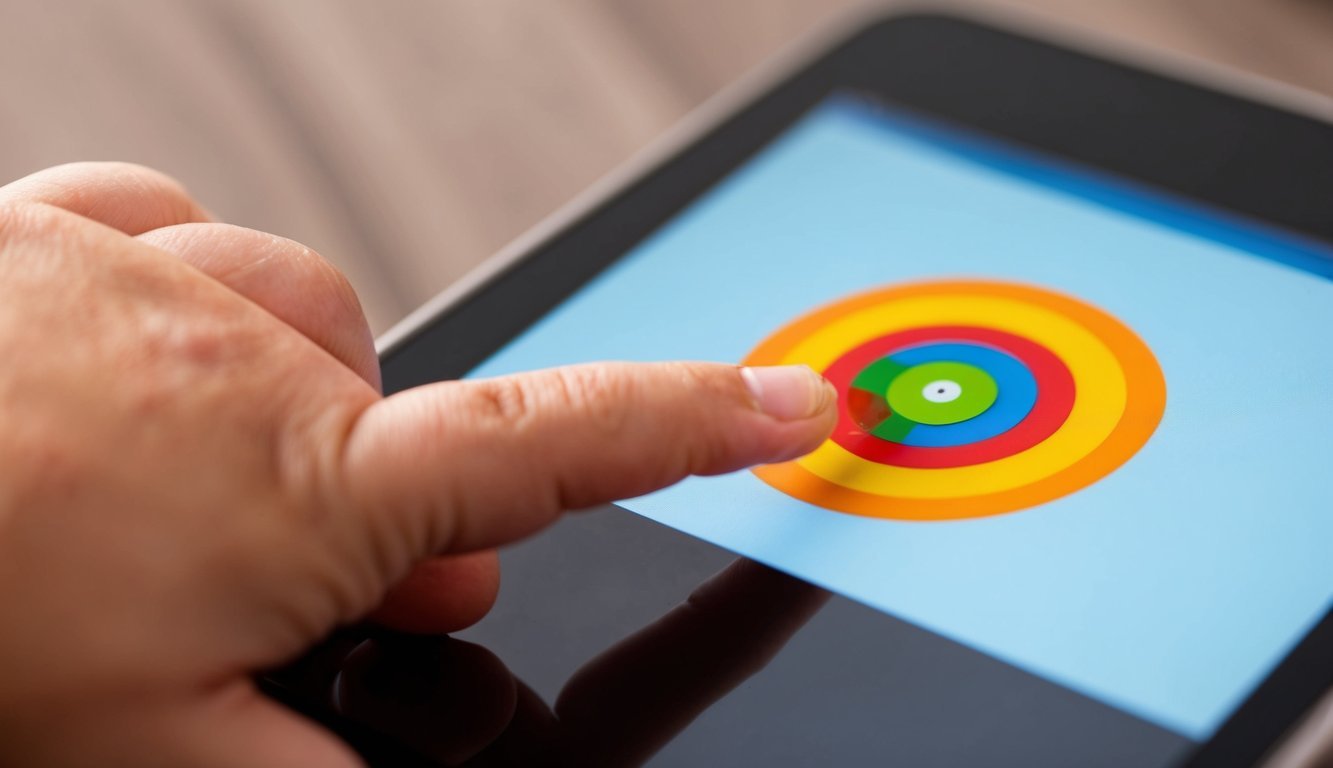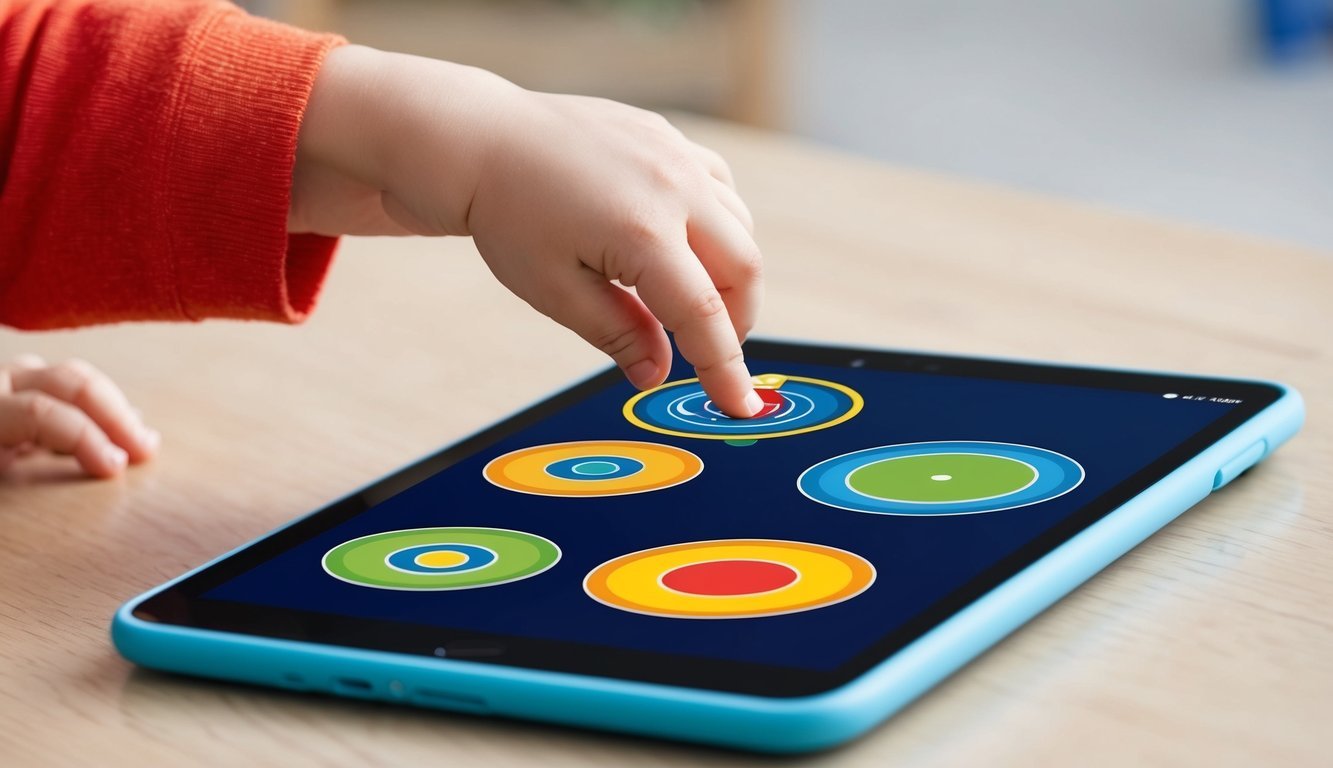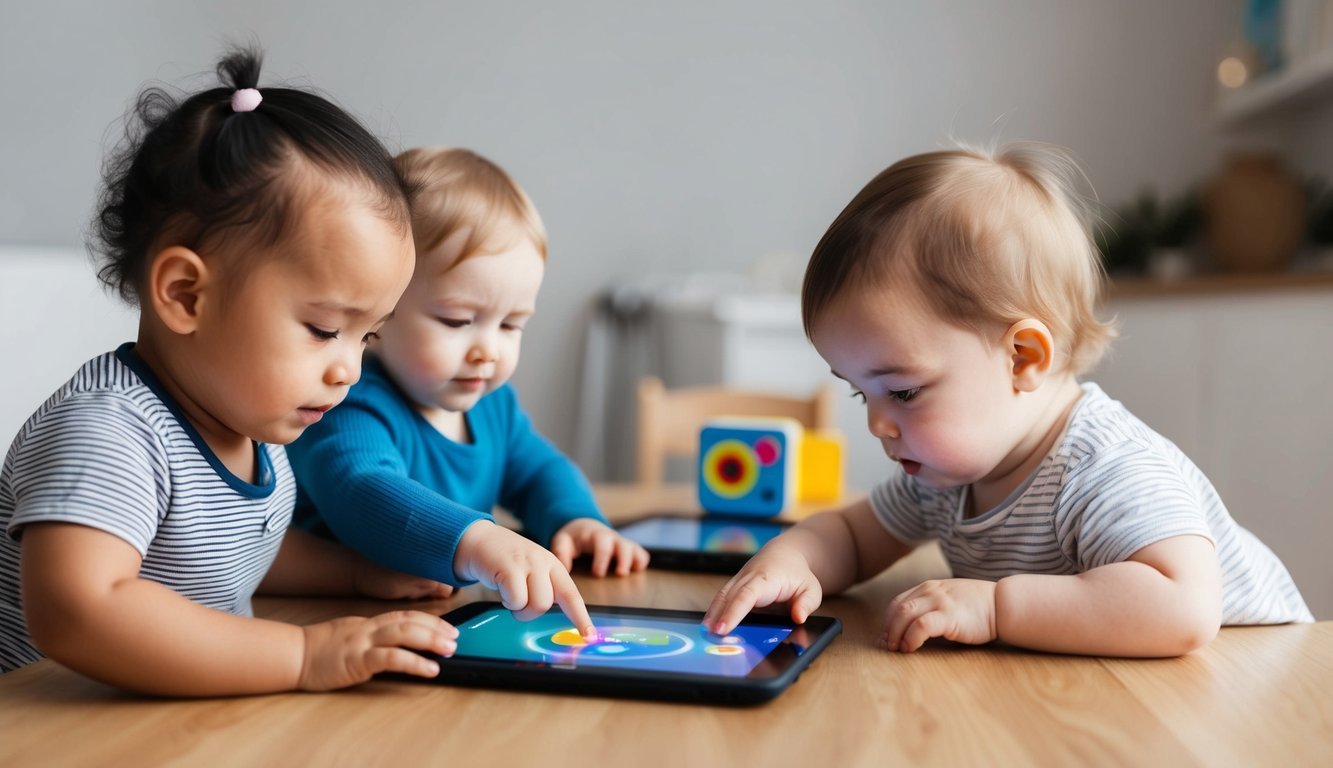PsychNewsDaily Publishers
100 Summit Drive
Burlington, MA, 01803
Telephone: (320) 349-2484
PsychNewsDaily Publishers
100 Summit Drive
Burlington, MA, 01803
Telephone: (320) 349-2484
Touchscreen use enhances toddlers' visual search skills, promoting quicker identification of objects. Balanced screen time supports cognitive development while fostering essential motor and social skills.

Many parents wonder how touchscreen use affects their toddlers’ development. Recent studies show that toddlers who use touchscreens regularly can find visual targets faster than those who use them less. This suggests that active interaction with screens may help enhance certain aspects of a child’s attention skills.

Experts highlight that daily touchscreen use can lead to quicker responses when looking for important items in their environment. For example, toddlers with high screen exposure tend to notice standout features more readily, which may shape how they interact with the world around them.
While some might worry about distractions, research indicates that these children also develop a unique focus on what grabs their attention.
Exploring this topic helps parents understand the balance between technology use and developing essential skills in their little ones.

Touchscreens have become common tools for young children, including toddlers. Devices like tablets and smartphones are often used for play and learning. This exposure can have both benefits and challenges.
Toddlers interacting with touchscreens engage in simple actions like touching, swiping, and pinching. These techniques help develop fine motor skills, as they learn to control their hand movements more accurately.
Research shows that toddlers who use touchscreens frequently may display differences in attention. They often find visual targets more quickly when something new catches their eye. This is known as saliency-driven attention and suggests that they adapt to modern technology in a unique way.
While these skills can be beneficial, high touchscreen use can also lead to shorter attention spans. It is essential for caregivers to balance screen time with other activities that nurture focus and concentration.
Kids learning through touchscreen devices might miss out on physical interactions with their environment. Activities like building, drawing, or playing with toys are crucial for their overall development.
Parents and caregivers should encourage a mix of play that includes both digital and real-world activities. This balanced approach can help ensure that toddlers grow up with strong motor skills and the ability to focus effectively.

Touchscreens can positively impact toddlers’ ability to find visual targets. The interaction techniques used on these devices enhance cognitive development and help children improve their visual search skills.
Research shows that toddlers who use touchscreens often become faster at identifying visual targets. When they frequently use devices like tablets, they learn to focus on specific items more quickly. This ability is important for their overall cognitive development.
By tapping, dragging, and swiping, toddlers engage in actions that boost their visual attention. This engagement can lead to higher accuracy in locating objects. Using touchscreen devices in daily activities allows children to practice and improve these essential skills naturally.
Interactive apps designed for toddlers play a key role in developing visual search abilities. Many educational apps incorporate games that require children to complete tasks that involve finding items or completing patterns. These activities are often engaging and fun, which keeps kids interested.
The content of these apps is designed to promote learning and interaction. For instance, apps that ask children to tap on animals or colors help them improve their recognition skills. Such interactions encourage toddlers to repeat actions, building their confidence and enhancing their cognitive skills.

Managing screen time is crucial for toddlers. Technology can offer benefits, but too much can lead to negative consequences for development. The balance between screen use and healthy growth is essential for infants and young children.
The American Academy of Pediatrics (AAP) suggests that children under 18 months should avoid screen time, except for video chatting. For toddlers aged 18 to 24 months, parents can introduce high-quality programming, but they should watch together.
Children aged 2 to 5 years should have no more than one hour of screen time per day. Parents should prioritize interactive and educational content. Engaging with kids during screen time can enhance learning and encourage conversations, supporting language and social skills.
Screen time can impact cognitive and motor skills. For instance, toddlers with higher touchscreen use may show quicker attention to visual targets. This suggests better visual search skills.
However, excessive screen time may lead to challenges in fine motor skills and executive function. Kids need hands-on play to develop these skills. Physical activities like drawing, building blocks, and outdoor play are essential for healthy motor development.
Parents should monitor screen time and ensure a mix of activities to promote academic achievement and social-emotional health. Balancing technology with real-world interactions is key for fostering growth in young children.

Research shows that touchscreen use can improve toddlers’ ability to spot visual targets. Specific case studies highlight how various projects utilize this technology to boost learning outcomes and focus.
The Tablet Project examined how tablets affect young children’s learning. Researchers used apps featuring engaging tasks like finding a red apple among blue apples.
In this study, toddlers with high daily touchscreen use completed tasks more quickly than those with less experience.Empirical evidence suggested that the interactive nature of these apps helped improve attention and visual searching skills. Children learned to focus on target items effectively.
The project showcased that targeted, playful activities can boost early learning. For instance, using a tablet to play simple games allowed toddlers to interact with the content. This hands-on approach encouraged better engagement and learning outcomes.
Interactive techniques, such as swiping and tapping, are key in educational apps for toddlers. These actions make learning fun.
Studies focused on how touchscreen interaction relates to self-regulation and word learning. For example, children using touchscreen apps showed improved skills in finding target items during tasks.
The immediate feedback from apps allows toddlers to learn quickly. If they tap the correct target, they often receive praise or rewards, reinforcing positive behavior. This method helps develop not just attention but also cognitive skills.
Through engaging apps, children can explore and learn while playing. This combination of fun and education enhances overall learning experiences in early childhood.

This section answers common questions about toddlers and touchscreen devices. It covers age recommendations, effects on attention, skill development, and tips for safe use.
Experts typically suggest introducing touchscreen devices to children around the age of 2. At this age, children can start to understand basic functions and may benefit from educational content. Parents should choose age-appropriate apps that promote learning and engagement.
Research shows that toddlers with high touchscreen use may be more easily distracted. They can quickly shift their focus to new objects when they appear. This can lead to shorter attention spans during other activities that require sustained concentration.
Using touchscreen devices can help improve visual-motor skills. Activities like tapping, swiping, and dragging can promote hand-eye coordination. These skills are important for tasks like writing and playing sports later in life.
There are benefits such as enhanced interactive learning and cognitive development. However, excessive use can lead to social skills issues and reduced physical activity. Balance is key to ensure that children benefit from technology without facing negative effects.
Parents should set clear rules about usage time and content. They can start with short, engaging sessions and gradually increase the time. Always supervise their usage and discuss what they are viewing to reinforce learning.
The American Academy of Pediatrics recommends that children ages 2 to 5 should have no more than one hour of screen time per day. Parents can use timers or schedules to help manage this. Regularly engaging in other activities, like reading or playing outside, can also support a healthy balance.